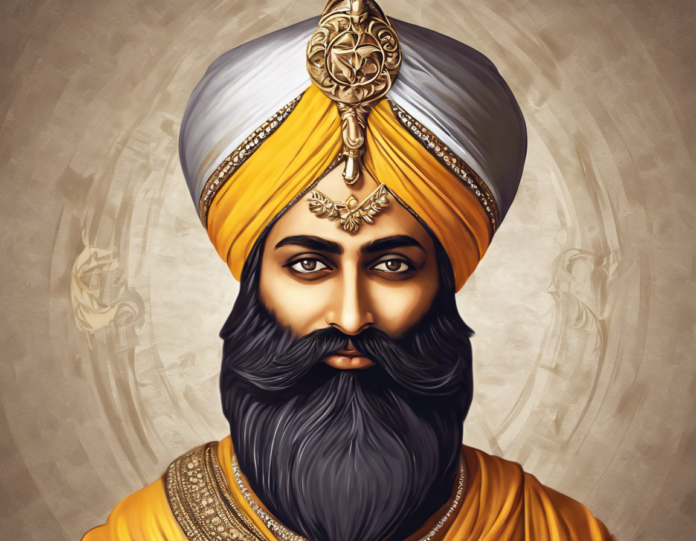Guru Gobind Singh Jayanti, also known as Prakash Utsav, is the birth anniversary of the tenth Sikh Guru, Guru Gobind Singh Ji. It is observed with great enthusiasm and reverence by Sikhs around the world. This significant Sikh festival falls in the month of Poh according to the Nanakshahi calendar, which usually corresponds to December or January in the Gregorian calendar. Guru Gobind Singh Jayanti is a time for Sikhs to reflect on the teachings and sacrifices of Guru Gobind Singh Ji, who is revered for his spiritual wisdom, military leadership, and social contributions.
The Life and Legacy of Guru Gobind Singh Ji
Guru Gobind Singh Ji was born on December 22, 1666, in Patna Sahib, Bihar, India. He was not only a spiritual leader but also a warrior, poet, and philosopher. Guru Gobind Singh Ji succeeded his father, Guru Tegh Bahadur, as the tenth Guru of Sikhism at the young age of nine. He played a crucial role in shaping Sikh history and institutionalizing the Khalsa, a community of initiated Sikhs committed to upholding the values of Sikhism.
Significance of Guru Gobind Singh Jayanti
Guru Gobind Singh Jayanti is a day of commemoration and celebration among Sikhs. It is a time to remember Guru Gobind Singh Ji’s teachings on courage, equality, justice, and peace. Sikhs observe this auspicious occasion by attending Gurdwaras (Sikh temples) for special prayers, kirtan (devotional music), and langar (community meal). The day often begins with the reading of the Guru Granth Sahib, followed by hymns and sermons that highlight Guru Gobind Singh Ji’s life and teachings.
Rituals and Traditions on Guru Gobind Singh Jayanti
On the occasion of Guru Gobind Singh Jayanti, Sikhs engage in various rituals and traditions to honor their beloved Guru. Some of the common practices include:
Nagar Kirtan:
Nagar Kirtan is a processional Sikh religious event that involves the singing of hymns and performing of Gatkha (Sikh martial arts). It usually features the Sri Guru Granth Sahib Ji being carried in a procession throughout the streets, accompanied by devotees singing hymns and playing traditional music.
Gatka Performances:
Gatka is a form of traditional Sikh martial arts that showcases skills in combat techniques using swords, sticks, and other weapons. On Guru Gobind Singh Jayanti, Gatka performances are organized to pay tribute to Guru Gobind Singh Ji’s valor and martial expertise.
Kirtan and Katha:
Kirtan refers to the singing of hymns from the Sikh scriptures, while Katha involves the recitation of stories and teachings from Sikh history. Gurdwaras host special Kirtan and Katha sessions on Guru Gobind Singh Jayanti, where devotees gather to listen to the sacred verses and narratives.
Seva and Langar:
Seva, or selfless service, is an integral part of Sikh tradition. On Guru Gobind Singh Jayanti, Sikhs engage in seva activities such as cleaning the Gurdwara, preparing langar (community meal), and serving food to all visitors as a way of practicing humility and equality.
5 FAQs about Guru Gobind Singh Jayanti:
1. Why is Guru Gobind Singh Jayanti celebrated?
Guru Gobind Singh Jayanti is celebrated to mark the birth anniversary of the tenth Sikh Guru, Guru Gobind Singh Ji, who played a significant role in shaping Sikh history and upholding the values of Sikhism.
2. How do Sikhs commemorate Guru Gobind Singh Jayanti?
Sikhs commemorate Guru Gobind Singh Jayanti by visiting Gurdwaras, attending prayers and Kirtan sessions, participating in Nagar Kirtan processions, and engaging in seva activities such as langar preparation and distribution.
3. What is the importance of the Khalsa in Sikhism?
The Khalsa is a community of initiated Sikhs established by Guru Gobind Singh Ji to uphold the core principles of Sikhism, including equality, justice, and selfless service. Initiated Khalsa members adhere to a code of conduct and wear the five Ks as symbols of their faith.
4. How do Sikhs honor Guru Gobind Singh Ji’s legacy on his Jayanti?
Sikhs honor Guru Gobind Singh Ji’s legacy on his Jayanti by reciting his hymns and teachings, organizing Gatka performances, conducting charitable activities, and reflecting on his contributions to Sikhism.
5. What is the significance of Nagar Kirtan on Guru Gobind Singh Jayanti?
Nagar Kirtan on Guru Gobind Singh Jayanti is a symbolic procession that showcases Sikh martial traditions, spreads the message of Sikhism, and fosters unity and community spirit among Sikh devotees. It is an opportunity to express reverence for Guru Gobind Singh Ji’s teachings through collective worship and celebration.
Conclusion
Guru Gobind Singh Jayanti holds immense spiritual and historical significance for Sikhs worldwide. It serves as a time to reflect on the teachings and legacy of Guru Gobind Singh Ji, the embodiment of courage, righteousness, and selfless service. Through rituals, prayers, and community gatherings, Sikhs commemorate Guru Gobind Singh Jayanti with reverence and joy, honoring the eternal impact of their beloved Guru on Sikhism and humanity.
















